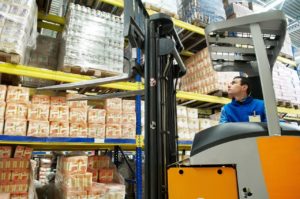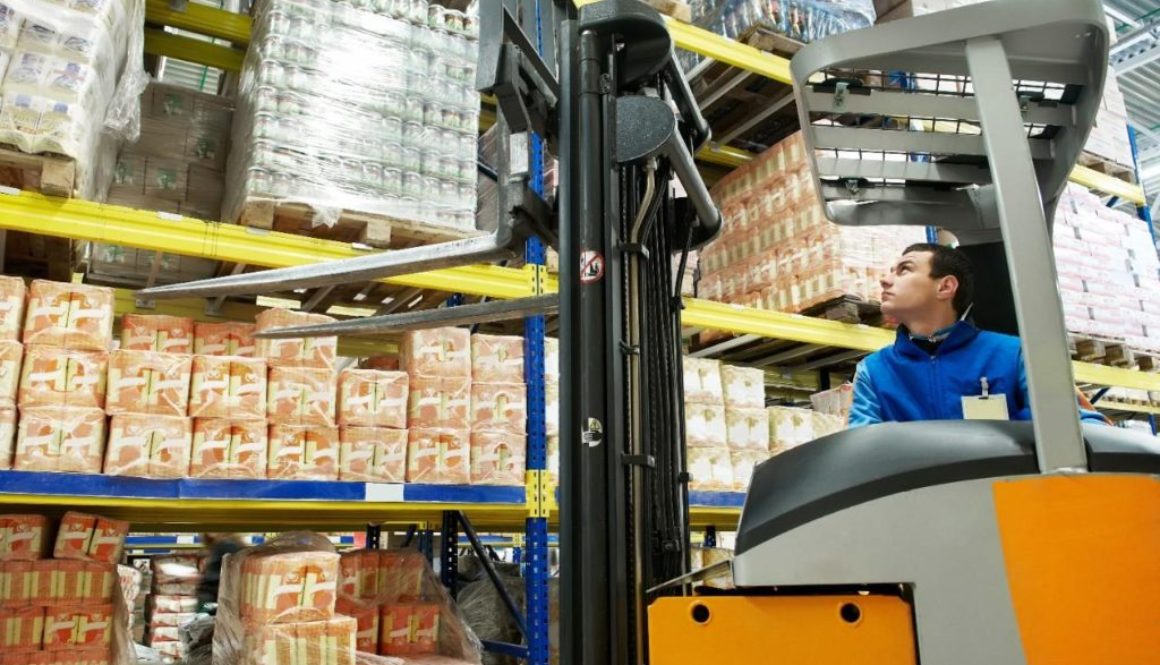How MHE Equipment Has Transformed The Modern Forklift

When it comes to the digital transformation of warehouse operations, perhaps no other piece of equipment demonstrates the technological advancements made in the industry better than forklifts.
Now, it may not seem the most obvious thing to point to when looking for how technology has impacted the supply chain. But, in reality, forklifts have perhaps undergone one of the biggest transformations. Forklifts used to be a simple piece of equipment totally reliant on a user, and only used to move heavy items. Now, think of them as mobile offices.
Modern forklifts are now able to carry out many warehouse operations. These tasks include locating, monitoring and scanning the movement of stock and resources throughout a warehouse. All of this is helping to streamline warehouse operations. Streamlining saves both time and money. Additionally, forklift tasks are a fundamental function of the modern supply network, which needs to be much more flexible than in previous years. But, how exactly has materials handling equipment (MHE) changed over the years? And how have these vehicles become a much more important part of operations?
Vehicle mounted tracking and monitoring
In the past, much of the tracking and monitoring of items within a warehouse had been done from within a central office. Forklifts were only brought into the scenario once managers located an item and needed it to be picked up and delivered to a loading bay.
Even then, drivers would have to remember the location of the item within the warehouse. Afterwards, locate it and take it to a loading bay. Only then would any mistakes be identified, such as bringing the wrong item.
Vehicle mounted computers now mean that forklift drivers can access the same desktop information received in an office direct to their vehicle. Mounted systems allows them to be notified of incoming items, or items which need to be picked up.
Drivers can carry out inventory management and asset tracking tasks from within the forklift, allowing them to remain in their vehicles on the warehouse floor for longer, and rapidly react to requests.
RFID tracking
The modern warehouse is now faster paced. Items need to be located and shipped to other locations more quickly to manage the rise of next-day or same-day delivery. In addition, being able to accurately track the movement of items around the warehouse is vital.
Previously, items could only be tracked when picked up and then dropped off at the end location, there was no visibility of location in between.
Even then it required scanning to be carried out correctly in the first place. If an item was mis-scanned, mislabeled or misplaced, it could disappear within the warehouse. Then it would be very difficult to track down.
RFID tracking works with sensors attached to forklifts. The sensors provide continual item monitoring integrated with vehicle mounted computers. RFID tracking allows drivers to locate items directly from their vehicle. Drivers no longer have to rely on directions from a warehouse manager in an office.
Mobile printing and scanning
Historically, item scanning and tracking could only be done after a delivery was made. This occurred either at its storage space or a loading dock. Items in transit were essentially invisible, only emerging again when it was delivered to its eventual location. Today, drivers can carry out the scanning themselves with handheld devices.
A central system links to the forklift through its mounted computer. This is how drivers can identify and scan items themselves, even from distance. This type of improved efficiency ensures they are picking up and delivering the correct item.
Similarly, drivers are able to sort out if items or pallets are missing labels, or have been labelled incorrectly. Previously, the driver flagged the problem with the warehouse manager. This wasted time while the items were delivered, identified, relabeled and then moved again.
Conclusion
Flexibility and adaptability have become the hallmarks of modern warehouse and supply chain operations.
The ability to streamline every aspect of the warehousing process has become essential. The business requires items to be moved across longer distances, to more varied locations and within tighter time-frames.
Forklifts are now far from the heavy load movers they once were and have become a symbol of just how far technology has pushed the modern supply chain in the right direction.
Here are some excellent vehicle mounted terminals for your business.

